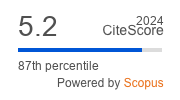Article | Open Access
Technocratic Populism in Italy after Berlusconi: The Trendsetter and his Disciples
| Views: | 5429 | | | Downloads: | 3937 |
Abstract: Notwithstanding the speculations from the literature, the empirical analyses still neglect the convergence between populism and technocracy. The Italian case can be of some interest in this perspective, given the rise of technocratic populism since Silvio Berlusconi’s rise to power in 1994. By analyzing the style of leadership and the processes of ministerial appointment and delegation, we argue that Berlusconi has been a trendsetter, more than a coherent example of technocratic populist leader. On the one hand, he played the role of the entrepreneur in politics, promising to run the state as a firm. Moreover, he adopted an anti-establishment appeal, delegitimizing political opponents and stressing the divide between ‘us’ (hardworking ordinary people) and ‘them’ (incompetent politicians). On the other hand, however, his anti-elite approach was mainly directed towards the ‘post-communist elite.’ Extending the analysis to the following two decades, we introduce a diachronic comparison involving three examples of leadership somehow influenced by Berlusconi. Mario Monti represents the paradox of the impossible hero: A pure technocrat unable to take a genuinely populist semblance. Matteo Renzi represents the attempt to mix a populist party leadership with a technocratic chief executive style. Finally, Salvini represents the pure nativist heir of Berlusconi, as the new leader of the right-wing camp. The latest developments of executive leadership in Italy, and the re-emergence of other residual hints of technocratic populism, will be discussed in the final section of the article, also in the light of the evident impact of the 2020 pandemic outbreak on the practices of government.
Keywords: Berlusconi; Conte; Italy; leadership; Monti; populism; Renzi; Salvini; technocratic populism
Published:
© Antonino Castaldo, Luca Verzichelli. This is an open access article distributed under the terms of the Creative Commons Attribution 4.0 license (http://creativecommons.org/licenses/by/4.0), which permits any use, distribution, and reproduction of the work without further permission provided the original author(s) and source are credited.


